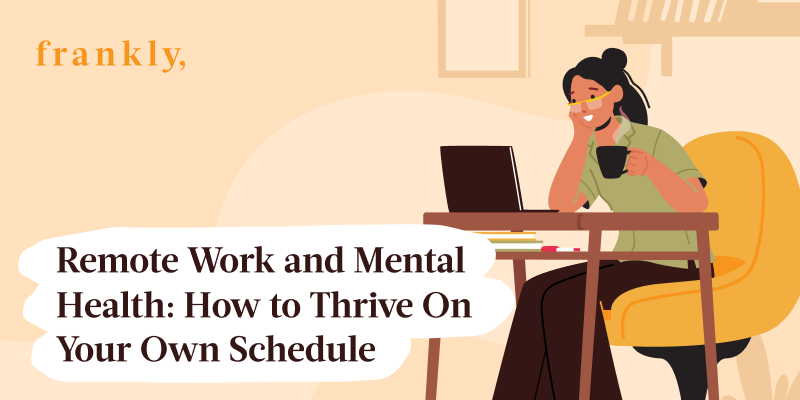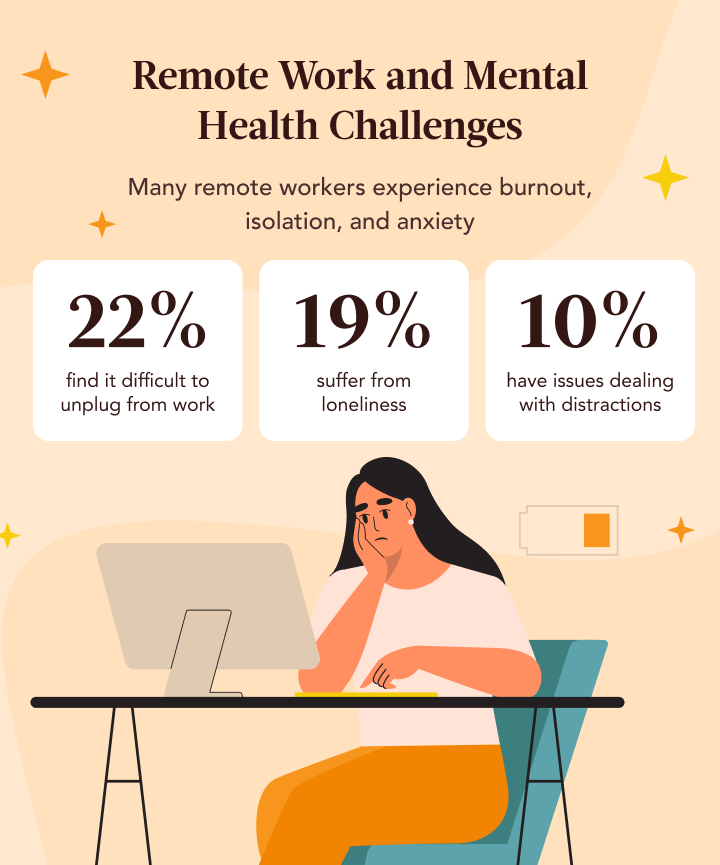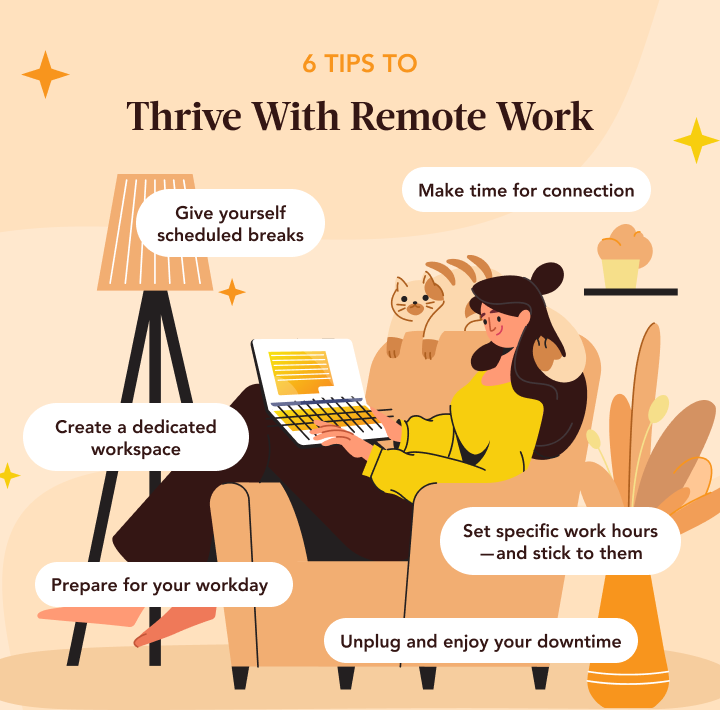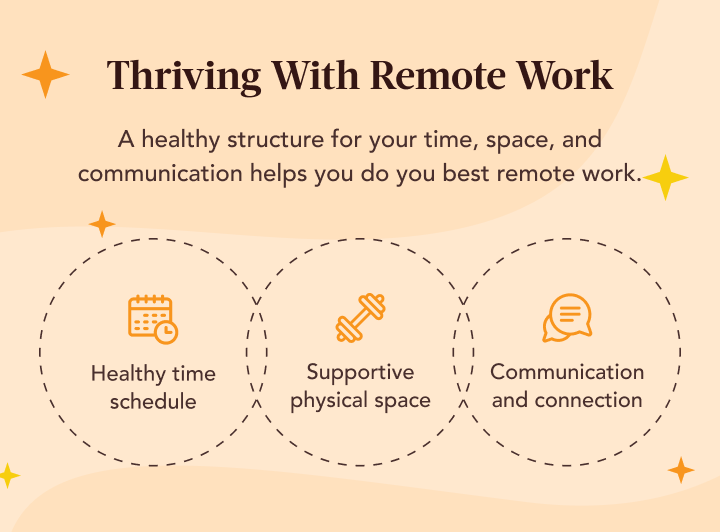Remote Work and Mental Health: How to Thrive On Your Own Schedule

Remote work has transformed how many of us spend our days. By 2021, almost half (45%) of all US employees worked from home all or part of the time, according to a Gallup poll. At the same time, remote work has brought with it new challenges that can affect our mental health and wellness.
As the Covid-19 pandemic has continued, many remote workers have experienced burnout, isolation, and anxiety. A study by Buffer found that 19% of remote workers suffer from loneliness, 22% find it difficult to unplug from work, and 10% have issues dealing with distractions.

When you’re working remotely, you’re in control of your own time structure and physical space, which has a big impact on your productivity, and your mental wellness. With the freedom to set your own schedule, it’s also easy to fall into negative patterns that lead to burnout, loneliness, and anxiety. Luckily, there’s a lot you can do to create a plan and routine that supports you.
A healthy structure that fits your needs and preferences helps you do your best work. In this article, we’ll dig into 6 key ways you can set up or adjust your routine to keep you focused and on track, while maintaining restful downtime for recharging.
Let’s dig in.

1 Create a dedicated workspace
Your physical workspace has a substantial impact on your productivity and mental wellness—and for remote work, that setting is up to you. Creating a dedicated, separate workspace within your home can help you maintain a healthy work-life.
For example, if you don’t have the luxury of an extra room, a specific corner, table, or desk might be a special space you carve out for work activities only. It can also be helpful to maintain a separation between work-mode and home-mode by eating meals away from your work space. Experiment with small adjustments until you find a setup that gets the best results for you.
2 Prepare for your workday
It can be unrealistic to expect that you’ll just snap your fingers in the morning and start working. Instead, try putting together a simple routine that supports you. As an example, you might shower and do your typical grooming routine, just as you would when commuting to an office. Small actions, like putting on work shoes, can signal to your body and mind that now it’s time to shift into work mode.
3 Set specific work hours—and stick to them
When you set dedicated work hours, you’re creating the space you need in your day both for work, and for shutting off later on when your work is completed. Dedicated work time means not getting sidetracked by outside tasks, or distractions like household chores, TV, social media.
Others may think you can “run an errand” just because you’re at home, so it can be helpful to communicate boundaries around your work time with your loved ones.

4 Give yourself scheduled breaks
Breaks are an important part of maintaining healthy focus. They’re a key element of your schedule, and give you time to both relax and process as your workday evolves.
Try out different types of breaks until you find the ones that work best for you. Examples could be a break for stretching, getting daylight exposure, enjoying some fresh air, a walk, walking a dog, meals, and getting a coffee or tea. Breaks should feel refreshing both physically and cognitively.
5 Make time for connection
Remote work changes our schedules and physical space, but it also deeply changes our social and emotional experience. Zoom, virtual meetings, and asynchronous messaging change our connection to coworkers and managers. Emotional cues can be hard to read virtually, and body language is missing (Pitt).
To build more connection into your remote schedule, consider scheduling one-on-ones, following up regularly to keep your communication clear, and adding fun bonding time, like shared virtual lunches, into your day.
Without a physical office to bring you together, it can be easy to lose the sense of belonging to a larger organization. Celebrating milestones with coworkers can help you reconnect to a larger purpose, and your team.
6 Unplug and enjoy your downtime
Just like having a clear start to the workday, it’s helpful to have a clear boundary for where your workday ends. Honor that boundary and close out the day by turning off notifications, disengaging from screens, and moving into a different physical space.
A clear end point helps your body and mind step out of work mode, and begin to decompress. Can you shut your laptop and give your undivided attention to kids and your significant other. Time off is crucial for relaxation, enjoyment, recharging, and many more aspects of your mental wellness.
How Frankly helps Wherever you’re at today, Frankly can deliver the support you need to navigate any mental wellness challenges that are coming up in your remote work. Our Care Guides provide judgment-free 1:1 mental wellness coaching that supports your unique lifestyle and needs. In your introductory session, you’ll take a deep dive into your history, and your Care Guide will create a personalized Journey Plan with step-by-step actions that get you on track to achieving your goals. Get started here.

Comments ()